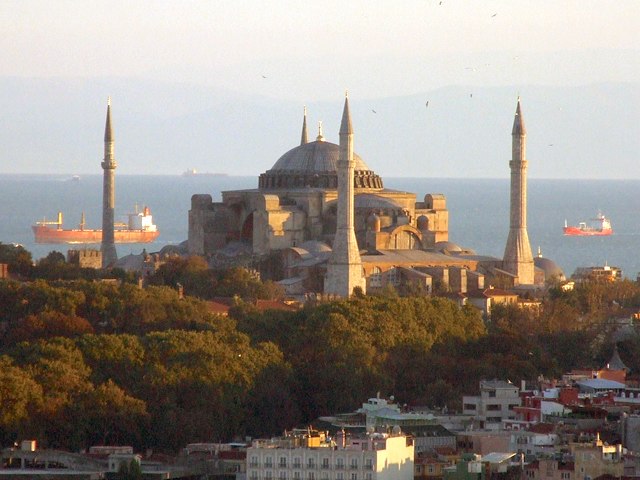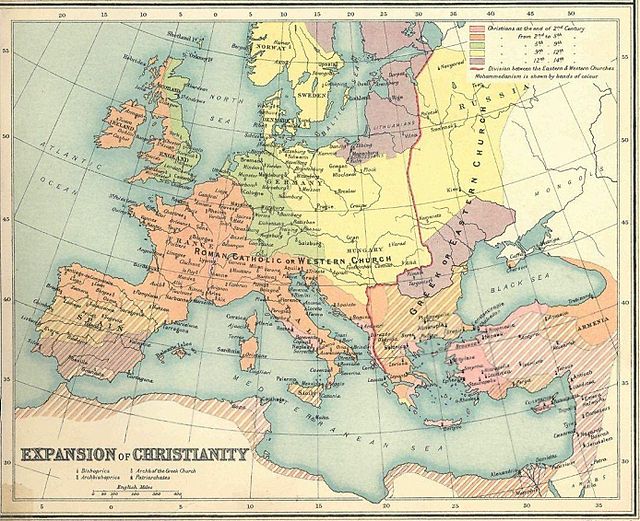Pope Leo IX, born Bruno von Egisheim-Dagsburg, was the head of the Catholic Church and ruler of the Papal States from 12 February 1049 to his death in 1054. Leo IX is considered to be one of the most historically significant popes of the Middle Ages; he was instrumental in the precipitation of the Great Schism of 1054, considered the turning point in which the Catholic and Eastern Orthodox Churches formally separated.
Miniature of Leo IX contained in an illuminated manuscript of the 11th century
1051 charter of Leo IX
The East–West Schism, also known as the Great Schism or the Schism of 1054, is the break of communion between the Catholic and Eastern Orthodox churches since 1054. A series of ecclesiastical differences and theological disputes between the Greek East and Latin West preceded the formal split that occurred in 1054. Prominent among these were the procession of the Holy Spirit (Filioque), whether leavened or unleavened bread should be used in the Eucharist, iconoclasm, the coronation of Charlemagne as Emperor of the Romans in 800, the Pope's claim to universal jurisdiction, and the place of the See of Constantinople in relation to the pentarchy.
Hagia Sophia, the cathedral of Constantinople at the time of the schism
Icon depicting the Emperor Constantine (centre) and the bishops of the First Council of Nicaea (325) holding the Niceno–Constantinopolitan Creed of 381
The division between the Eastern and Western Churches




